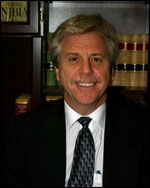
It wasn’t a sure thing but the Federal Reserve did in fact raise the Federal Funds rate today by 0.25 percent, which will affect interest rates for a variety of credit transactions such as credit cards and automobile loans while at the same time announcing there will no longer be any predictions regarding rate moves for the following year but did indicate two more rate increases are likely. The Fed Funds rate moved from 2.25 percent to 2.5 percent.
At the very beginning of 2018, Fed Chair Powell announced that we could expect four separate 0.25 percent rate increases by the end of 2018. So far there have been three such rate increases with the final one coming today. There was some change in expectations over the past few weeks whether or not the Fed would actually go through with the promise to make four rate bumps in 2018.
This came on the heels of recent Fed comments that the economy might not be ready for another rate increase and that it’s not a given. Specifically, he stated that rates are “just below” the range Fed officials consider “neutral.” A neutral rate is one that doesn’t stimulate the economy nor slow it down with higher cost funds. Further, Fed comments also indicate that rate increases in 2019 might slow down to only two.
The Federal Reserve’s Federal Open Market Committee, usually referred to as the FOMC, hold two day meetings about every six weeks and the last meeting of 2018 concluded today. One of the main responsibilities of the Fed is to control the cost of money. This is attempted by adjusting the Federal Funds rate. The Fed Funds rate is the rate banks charge one another for short term, overnight lending.
Banks are required to keep a certain level of liquidity each and every business day and if they’re running short, they need to borrow money quickly and seamlessly. The economic theory is that by raising rates, banks will then transfer that increase to consumer loans such as credit cards and automobile loans. Conversely, to give a sluggish economy a boost, the Fed can lower rates.
It’s important to note here that the Fed Funds rate is not directly tied to your everyday conforming 30 year fixed rate loan. Yet adjusting the rate one way or the other lets investors know what the Fed thinks of the current economy and economic expectations in the near future. When backing off from an announced rate increase, that could tell investors the Fed isn’t as confident in the economy as they once were. Today’s move places the Fed Funds rate at the neutral mark with this 0.25 percent hike. The next few weeks of economic activity will provide hints at what the Fed might or might not do at the next round of FOMC deliberations.
